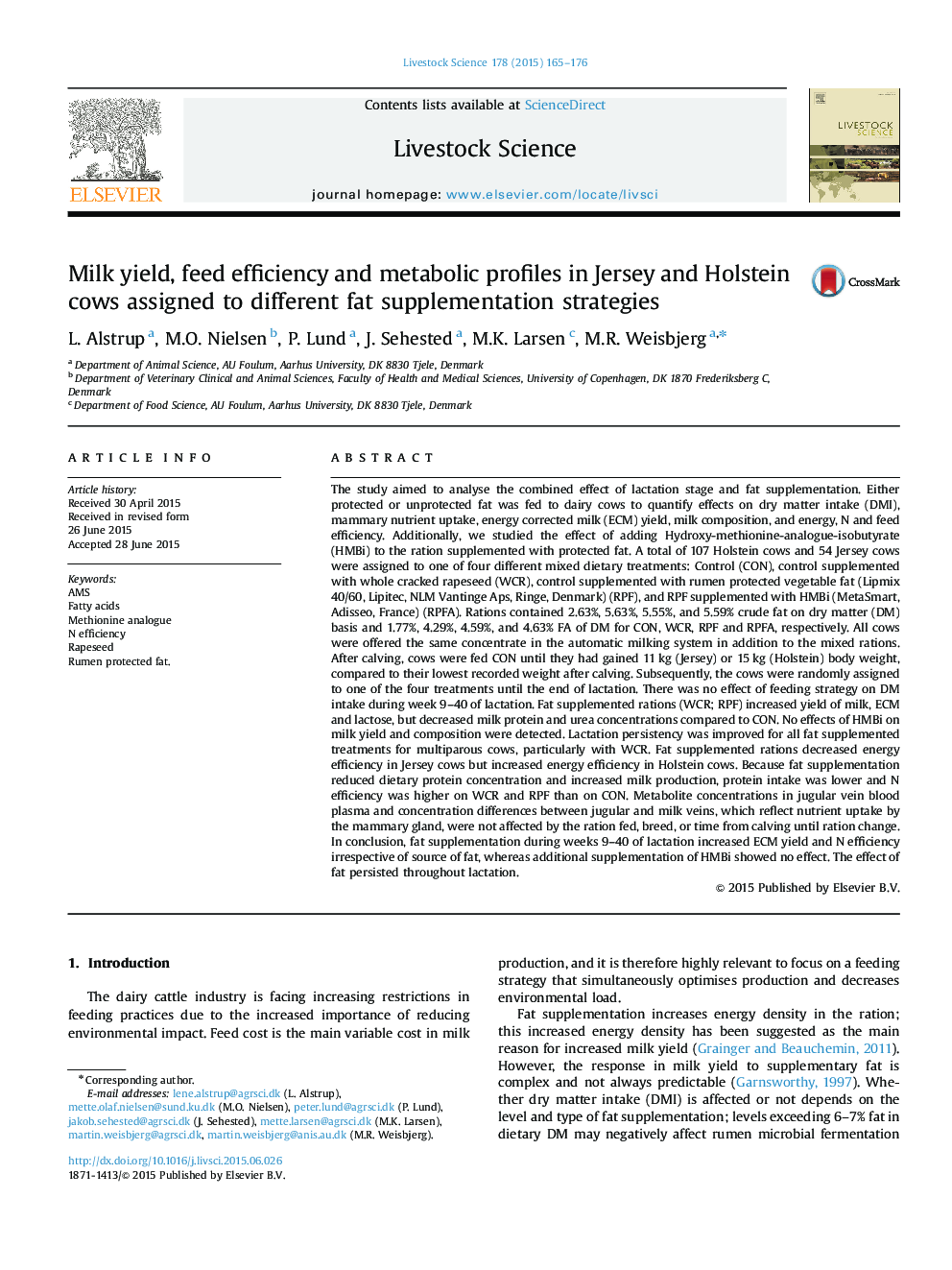| کد مقاله | کد نشریه | سال انتشار | مقاله انگلیسی | نسخه تمام متن |
|---|---|---|---|---|
| 2447073 | 1553954 | 2015 | 12 صفحه PDF | دانلود رایگان |
• Fat supplementation increased milk yield and N efficiency.
• Supplementation with methionine analogue showed no effect on milk production.
• The effect of fat persisted throughout lactation.
The study aimed to analyse the combined effect of lactation stage and fat supplementation. Either protected or unprotected fat was fed to dairy cows to quantify effects on dry matter intake (DMI), mammary nutrient uptake, energy corrected milk (ECM) yield, milk composition, and energy, N and feed efficiency. Additionally, we studied the effect of adding Hydroxy-methionine-analogue-isobutyrate (HMBi) to the ration supplemented with protected fat. A total of 107 Holstein cows and 54 Jersey cows were assigned to one of four different mixed dietary treatments: Control (CON), control supplemented with whole cracked rapeseed (WCR), control supplemented with rumen protected vegetable fat (Lipmix 40/60, Lipitec, NLM Vantinge Aps, Ringe, Denmark) (RPF), and RPF supplemented with HMBi (MetaSmart, Adisseo, France) (RPFA). Rations contained 2.63%, 5.63%, 5.55%, and 5.59% crude fat on dry matter (DM) basis and 1.77%, 4.29%, 4.59%, and 4.63% FA of DM for CON, WCR, RPF and RPFA, respectively. All cows were offered the same concentrate in the automatic milking system in addition to the mixed rations. After calving, cows were fed CON until they had gained 11 kg (Jersey) or 15 kg (Holstein) body weight, compared to their lowest recorded weight after calving. Subsequently, the cows were randomly assigned to one of the four treatments until the end of lactation. There was no effect of feeding strategy on DM intake during week 9–40 of lactation. Fat supplemented rations (WCR; RPF) increased yield of milk, ECM and lactose, but decreased milk protein and urea concentrations compared to CON. No effects of HMBi on milk yield and composition were detected. Lactation persistency was improved for all fat supplemented treatments for multiparous cows, particularly with WCR. Fat supplemented rations decreased energy efficiency in Jersey cows but increased energy efficiency in Holstein cows. Because fat supplementation reduced dietary protein concentration and increased milk production, protein intake was lower and N efficiency was higher on WCR and RPF than on CON. Metabolite concentrations in jugular vein blood plasma and concentration differences between jugular and milk veins, which reflect nutrient uptake by the mammary gland, were not affected by the ration fed, breed, or time from calving until ration change. In conclusion, fat supplementation during weeks 9–40 of lactation increased ECM yield and N efficiency irrespective of source of fat, whereas additional supplementation of HMBi showed no effect. The effect of fat persisted throughout lactation.
Journal: Livestock Science - Volume 178, August 2015, Pages 165–176
